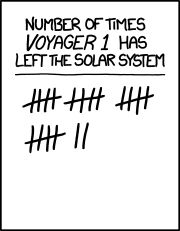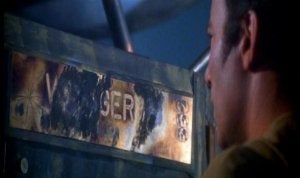Link.
In 2012, NASA's Voyager 1 probe became the first man-made object to leave the solar system, catapulting itself into the farthest reaches of the universe ever touched by humans or, it didn't. Determining the exact borders of our solar system proved controversial. Now, though, we know NASA's position on the subject: although the probe has yet to leave the solar system, it's entered interstellar space, a part of the universe the human race has never reached.
Why the waffling? Partly, Voyager 1 seems to be involved in a weird semantic game. The sun emits a magnetic field around itself, which is known as a solar bubble and encases the heliosphere, a magnetic sphere that is arguably the edge of the solar system. But like an embattled country, the borders of the solar system are controversial; where it ends depends on who you ask. When the probe appeared to exit the heliosphere, many cheered it on for leaving the solar system; others simply said it had entered interstellar space, the area beyond the heliosphere. NASA, in an announcement this week, hedged the debate: Voyager 1 has, beyond doubt, reached interstellar space, although it's still within our solar system.
Determining that fact requires relying on stop-and-go data. Every so often, the sun lets out a coronal mass ejection, an awe-inspiring eruption powerful enough to vibrate the particles around the probe, giving NASA a momentary blip of data it can use to determine the probe's position. Voyager 1 has been hit by three CMEs since it entered interstellar space in 2012. The first was too small to immediately be detected. The second, from March 2013, gave scientists a reasonable indication that the probe had entered interstellar space. The third, which hit in March of this year and was announced by NASA scientists this week, removed any lingering doubt about the probe: Voyager 1 has entered interstellar space.
NASA tamped down the announcement, though, by adding that the probe had not officially made its way out of the solar system, since it has yet to break through a cosmic halo of comets at its farthest edge. Researchers have estimated breaking that ring, known as the Oort Cloud, will take another 14,000 to 28,000 years.






